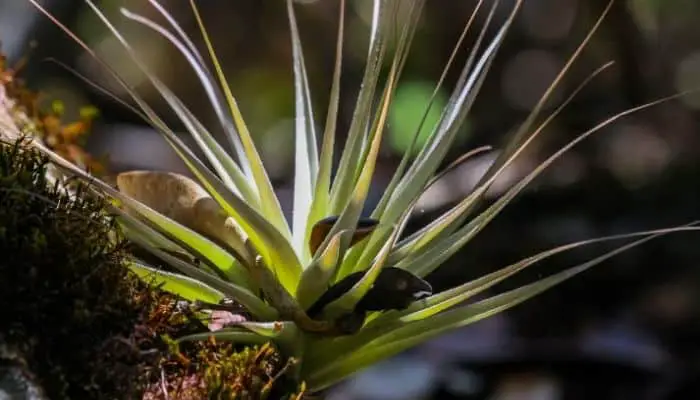Succulents are extremely interesting plants, known particularly for their ability to hold water and withstand hot temperatures.
They are known to inhabit desert conditions that feature water scarcity as well as intense sun exposure.
However, succulents can be found pretty much everywhere in the world, excluding Antarctica.
There are many types of succulents that live within a variety of different plant families – many live in deserts, while some live high up on snowy mountains and others thrive on dry lake beds.
It’s clear that succulents are all around us but can they also be classified as epiphytes?
Table of Contents
Are Succulents Epiphytes?
Epiphyte succulents are plants that grow on the surface of other trees and plants for stability and to access water and essential nutrients for their survival (but they are not parasites).
And yes, some succulents are epiphytes.
They satisfy their needs for nutrients and moisture from the surrounding air, rainfall, and debris that accumulates around them.
Native to Brazil, the Christmas cactus is an example of a succulent epiphyte that anchors itself to the branches of trees in rain forests.
Let’s did a little deeper and look more closely at some succulents which are epiphytes.
Related Article: Is A Succulent A Monocot Or Dicot? (explained)
Succulents That Are Epiphytes

Epiphyllum, Hylocereus, Disocactus, Weberocereus, and Rhipsallis are some examples of succulents that are also epiphytic in nature.
How Do Epiphytes Survive?
Epiphytic succulents are a fascinating species of plants due to the fact that they have an unorthodox manner of surviving.
Unlike parasites they don’t depend on other plants for their nutrients, rather they are self-sufficient.
They attach themselves to other plants for structural support, using their roots, and through the roots collect the nutrients they need.
They are ideally situated in wet areas such as jungles and rainforests, as opposed to the arid desert conditions where succulents and cacti are normally situated.
Moreover, they usually anchor themselves onto various dips and pockets on the surface of trees, normally preferring the higher altitudes.
It is the higher altitudes that enable them to collect the water that they need to survive.
What Do Epiphytic Succulents Look Like And What Environments Do They Like
Many people do not realize that though some succulents can be classified as epiphytes, the basic ecosystem that succulents and epiphytes derive from are different.
It is interesting to find that epiphytes resemble leafy succulents as well as cacti, particularly due to their thick ‘leaves’, with many epiphytes being flowering plants.
Epiphytes traditionally grow in well-ventilated and rather airy places such as treetops in the jungle.
They don’t depend on the plants which they are supported by for nutrients or water, which means that their source of water is usually rain or fog.
For nutrients, epiphytes depend upon detritus or leaves that have been caught upon the branches near them.
Related Article: Is A Succulent An Angiosperm?
Do Epiphytes Need Soil?
As mentioned previously, epiphytes are ‘air plants’ which means that they do not require soil to grow.
With that being said it is important to mention that they do require the presence of either moss or leaf debris that is present on or near tree branches.
It is important to remember how epiphytes depend upon specific adaptations that allow them to survive without interacting directly with soil.
Can You Grow Non-Epiphytic Succulents Epiphytically?
There is no doubt about it, both succulents and epiphytes are interesting kinds of plants.
Many people are often surprised to find succulents growing epiphytically, even though such an occurrence is more common than most people realize.
If you are interested in experimenting with unique plant growths, it is always a good idea to try growing non-epiphytic succulents epiphytically.
One of the most common pairings is that of a palm tree with a cactus.
Cacti can easily grow in the pockets of palm trees, especially if there is a lot of moisture in the air.
In order to experiment all you need are some cuttings of succulent and a good epiphyte host that can provide nutrients for the succulent itself.
You can even facilitate the process by installing a sprinkler or a drip system to provide the plants with sufficient water.
Final Thoughts
As you have seen, there are a large variety of succulents that inhabit the world.
Some kinds of succulents are epiphytic in nature which means that they depend on other plants to give them the required support to grow.
It is interesting to note how epiphytes are not parasitic, but depend only on other plants for structural support.
Many people also try to grow non-epiphytic succulents epiphytically, something I’m definitely planning on experimenting with in the future.




